Solana Blockchain - Crypto Academy / S4W4 - Homework post for pelon53
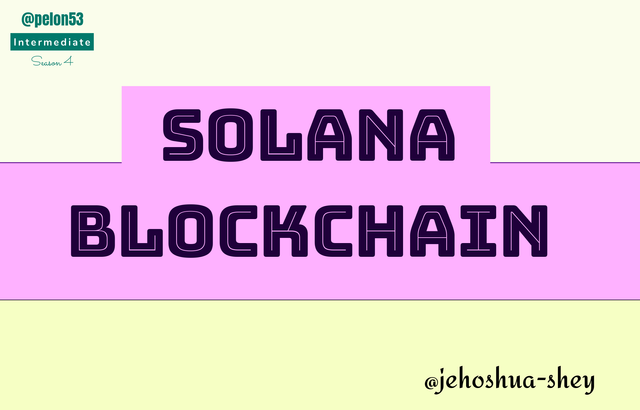
Q.1. Explain in detail the PoH of Solana
Proof of History is a core innovation of the Solana blockchain. It helps the blockchain to achieve scalability without sacrificing security or decentralization. It achieves this by addressing a particular issue - on time agreements.
HOW PROOF OF HISTORY WORKS
Usually, when blocks are hashed, they're time-stamped by the nodes hashing the block. Although, timezones are different and so is the global perception of time between people in different regions. The major problem however is that, timestamps are part of the data being verified in a block. It has to be confirmed on the network that the particular time stamped on a block really passed.
Normally, every node has to agree on this and that's part of the reason it takes bitcoin 10 mins to churn out a block. Also, even if blocks are randomly hashed, their timestamps will definitely have to be verified later so they can be sorted out in sequence and when that happens, throughput reduces.
Now, Proof of History solves this problem with another grand utilization of cryptography. Here's how it works...
Consider this analogy,
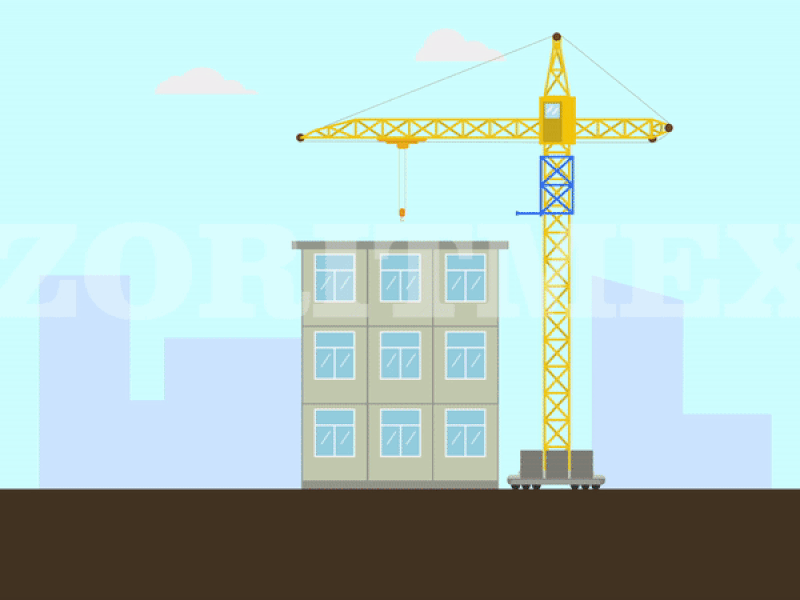
Source
If a house is being built and snapshots were taken at different stages of construction and scattered randomly for you to arrange in order of occurrence, from the progress in the pictures, you would easily order them right? Yes, this is due to the progress of construction as a function of time.
Now, over to PoH.
As activities go on on the blockchain, PoH uses a verifiable recursive delay function to hash events and transactions. Each of these hashed events and transactions will consequently have a unique hash and count which will both be a function of time.

Source
The unique hash and count is then used to arrange the events and transactions as it shows which event or transaction happened before the other.
PoH serves as a cryptographic clock as through it, all the nodes can verify the right sequence of events and transaction in no time. Thus time spent on verifying the sequence of events is saved, creating a more scalable system of verifying events and transactions.
Q.2. Explain at least 2 cases of use of Solana.
Solana is a programmable blockchain just like Ethereum. It is often to compared to Ethereum and the likes due to it's programmability. It is also referred to as the 'Ethereum killer'. Below are some use cases of Solana.
ORCA
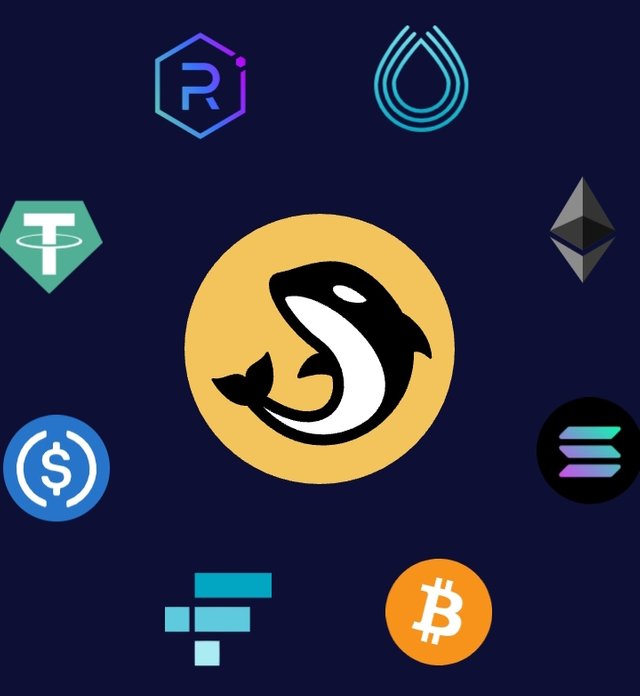
Credit
If you're ocean savvy, you might think we're talking about killer whales here. Well, firstly, this one is very friendly and no, it's not an aquatic whale.
Orca is a user-friendly decentralized exchange built on the Solana blockchain. It was designed to help users exchange their crypto asset in such a way that they still could even if they were not crypto savvy.
Orca is more concentrated on serving the doctor's orders to its users than parading complex programs on its exchange, hence the simplicity of its offering - exchanging, pools, and staking. It also offers supplements like earning collectibles that sound like the exchange deals on aquatic life.
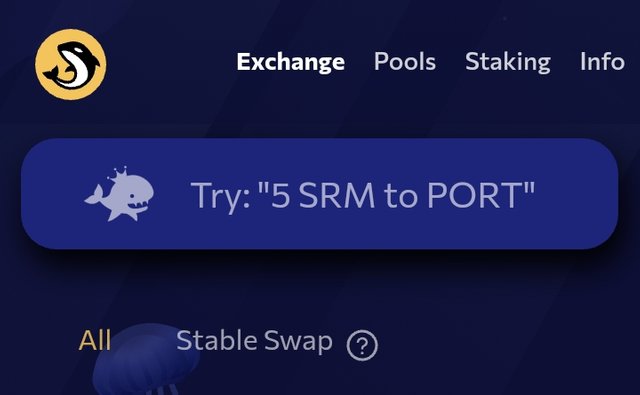
Credit
Users who use the orca for exchanging their assets are treated to low transaction fees of about $0.00001 and a throughput synonymous with the Solana blockchain, 50,000 TPS.
The beauty of orca is that it features a price comparison using CoinGecko, so not only do you pay almost nothing at get you exchange completed in no time, you can as well be sure you're not over paying for the asset you're exchanging.
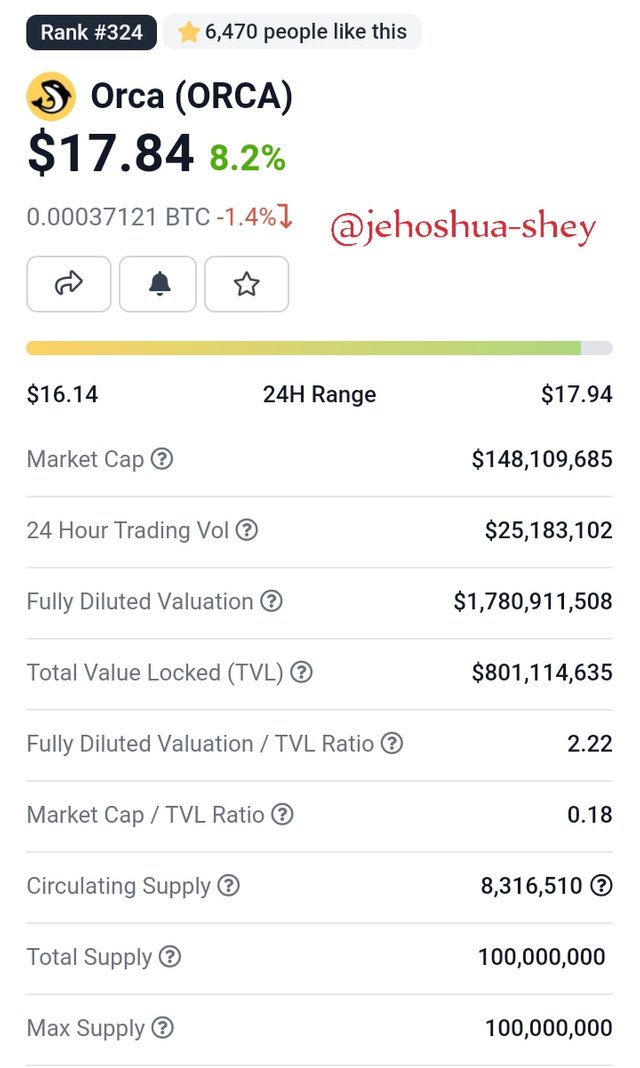
Credit
Orca has a token so named that's worth $17.84 as at press time. This token has a maximum supply of 100 million units and a circulating supply of about 8.3 million as at press time. It's Market Cap stands above $148.109 million and thanks to CoinGecko, we know it's ranked 324 as a result.
THE MEDIA NETWORK
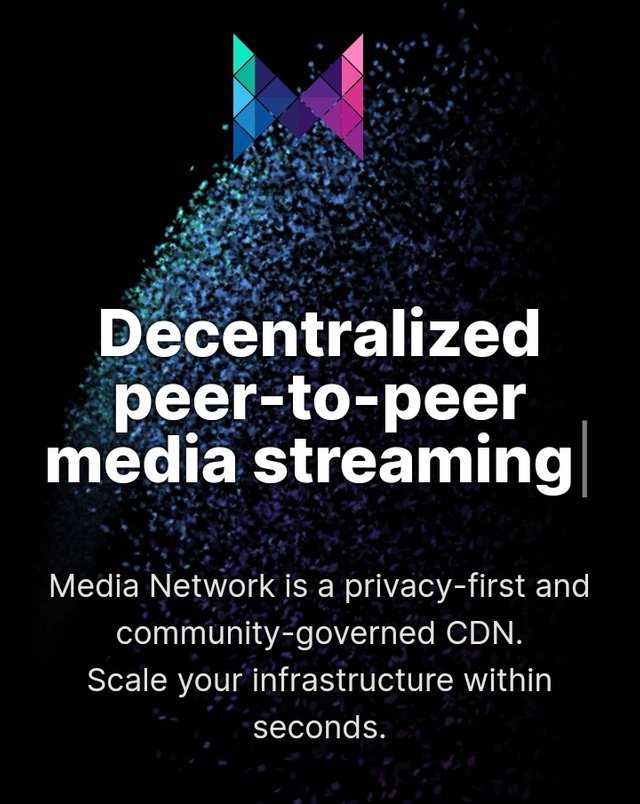
Credit
One of the reasons why the internet is more easy to use is due to the action of CDNs. CDN is short for Content Delivery (or Distribution) Network and it helps to remove latency when surfing the internet.
What CDN does is simply to duplicate copies of a webpage across different servers on different parts of the globe. When a web request is initiated by a user, the CDN serves the response to that request from the closest server to that user thereby reducing latency.
CDNs have been before blockchain technology so, needless to say, it's traditionally decentralized.
The Media Network offers us a decentralized CDN service. It employs an open source self-governed solution. It creates a distributed bandwidth market where anyone can set up a Media edge and act as a CDN. Users in need of their resources e.g media platforms, come to hire and they pay a fee which is remitted to the owner of the Media edge.
In this decentralized CDN setup, the network employs novel mechanisms to keep its participant honest. These mechanisms also encourages participants on the network to collaborate.
source
Q.3. Detail and explain the SOLA token.
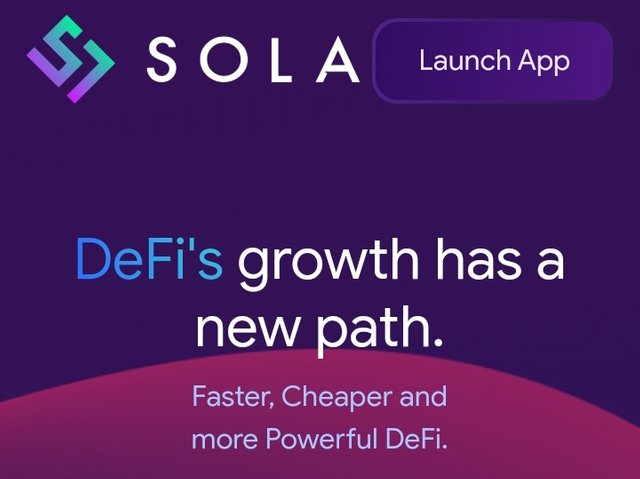
Credit
SOLA Token is a DeFi that combines centralized and decentralized exchange to create a very fast, cheap and powerful DeFi. This DeFi boasts of liquidity that is sourced from an entire ecosystem. It allows it users access to decentralized exchanges in the Solana ecosystem e.g Serum in addition to its own liquidity.
When using this DeFi to swap, it compares prices to give the user the best swapping price. This comparison is done with external exchanges like Serum. So if you're swapping on SOLA Token and the pair you're interested in has a cheaper pool on Serum, SOLA Token will execute your swapping using that pool on Serum.
The DeFi has a roadmap that includes introducing several interesting features for it users between 2021 and 2022. The roadmap includes
Q4/2021
- Launching DEXs for Crypto Trading
- Launching Token Swapping
- Launching a Lottery Platform
- Launching Staking, Farming
Q1/2022
- Launching a platform that allows users to mint and airdrop their tokens
- IDO Launchpad for Decentralized Fundraising
Q2/2022
- Launching a platform that can easily and quickly create NFTs on Solana
- Tackling Bigger Challenges
NATIVE TOKEN - SOLA
The platform has a native token known as SOLA. Details of this can be seen on CoinGecko. It was issued in August 2021. At time, all the tokens were already created and introduced into the market. The tokens numbered up to 27,153,077 million.
The platform however plans to buy back some SOLA tokens using the proceeds from API and transaction fees, and plans to burn them until there are only 21 million tokens left in circulation. This makes the SOLA token a deflationary token just like Bitcoin.
source
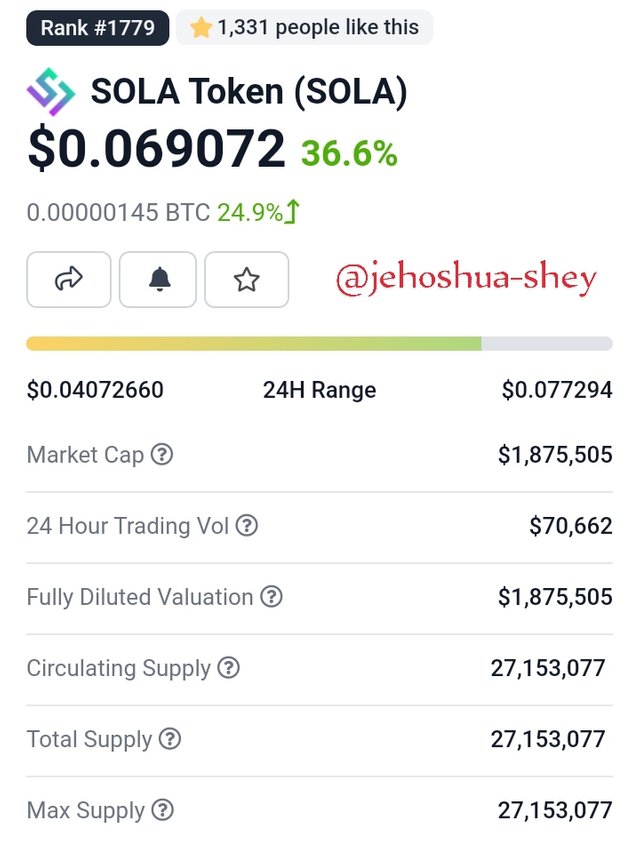
Source
From CoinGecko, we learn of the current price of SOLA at press time which is $0.069072 and a Market Cap of $1,875,505. The token saw a daily trade volume of $70,662 over the previous 24 hours.
Q.4. When did Solana Blockchain see its operations interrupted? Why? Explain.
Solana blockchain saw its operations interrupted on September 14, 2021 as was reported in a tweet from the blockchain's official twitter account.
The tweet read
Solana mainnet-beta is experiencing intermittent instability. This began approximately 45 minutes ago, and engineers are investigating the issue.
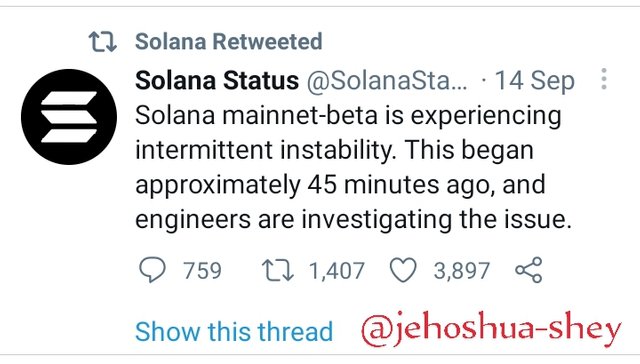
In another tweet on the thread, the official account offered an explanation as to the cause of the disruption, claiming it was as a result of 'resource exhaustion'.
In a separate tweet by Solana's official twitter account, a more lengthy explanation was tendered which read
1/ Solana Mainnet Beta encountered a large increase in transaction load which peaked at 400,000 TPS. These transactions flooded the transaction processing queue, and lack of prioritization of network-critical messaging caused the network to start forking.
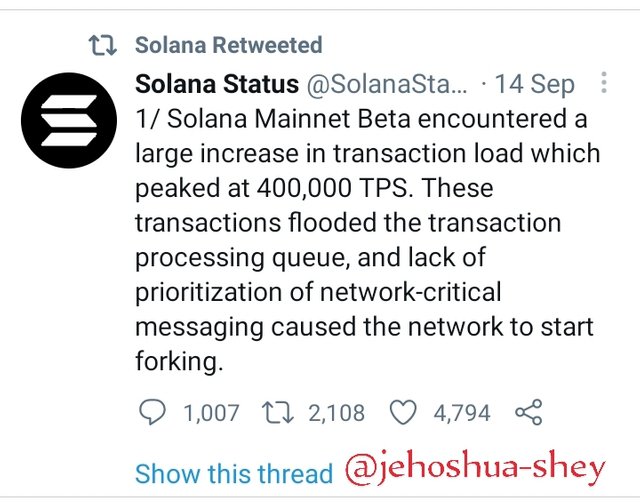
Because Solana had before time been equivocal about its 'infallible' blockchain, some social media users we're left fuming at the disruption while some leaned towards the sympathizing side.
Truth is, Solana suffered from the worst incidence any man-made digital system could suffer - an 'Outage'.
This happens when there's so much use of a service that it becomes crowded with users and can no longer function. It's like filling a pipe with a lot of grain all at once that they tend to align themselves so compactly along a cross section of the pipe that no single grain can pass through.
As daring as it sounds, Solana punched above it's weight and the result was a grounding of the 'Ethereum killer'.
Outages however are not uncommon. Matter of fact, it happens to the best among digital giants - Facebook, Robinhood, Binance, Coinbase, name it. Thus, it was understandable when Solana's founder, Anatoly Yakovenko, waved off the 17-hour long blackout as 'growing pains'.
Was it resolved?
Yes, in a tweet coming after the incident, the blockchain's official twitter account confirmed this
The Solana validator community successfully completed a restart of Mainnet Beta after an upgrade to 1.6.25. Dapps, block explorers, and supporting systems will recover over the next several hours, at which point full functionality should be restored.
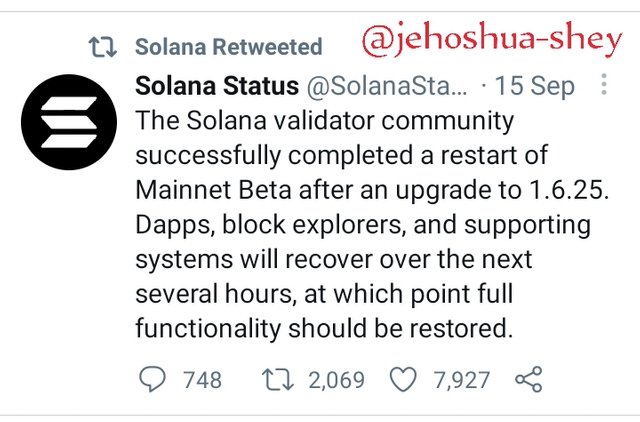
Q.5. Check the last block generated in Solana and make an approximate calculation of How many blocks per second have been generated in Solana, taking into account from the initial block to the current one? Justify your answer and show screenshots.
MOST RECENT BLOCK
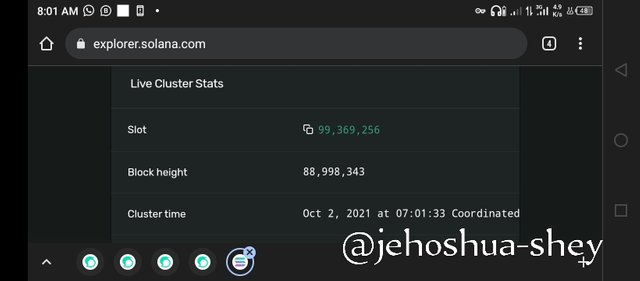
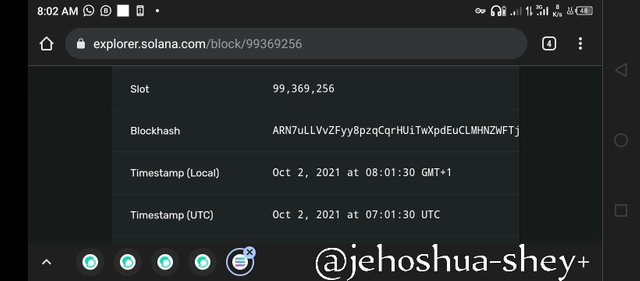
From the images above, we see the most recent block occupies slot 99,369,256. It was also created on October 02, 2021 08:01:30 GMT+1.
GENESIS BLOCK
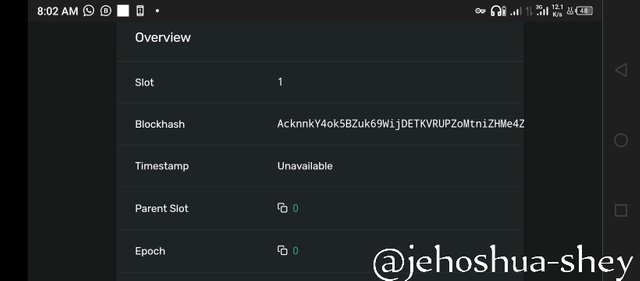
The timestamp is not available on the first page, so we check with one of the transactions in the block to check the time
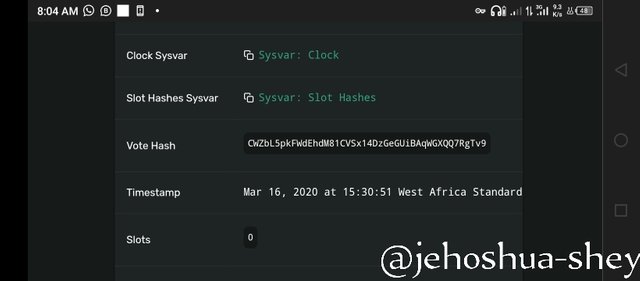
The genesis block from the image above was created on March 16, 2020 15:30:51 West African Standard Time (GMT+1)
Note West African Standard Time is my local timezones and is same as GMT+1.
Now from March 16, 2020 15:30:51 to October 02, 2021 08:01:30 is
564 days 16 hours 30 minutes 49 seconds
30 minutes = 30 x 60 seconds = 1800 seconds
16 hours = 16 x 60 x 60 = 57,600 seconds
564 days = 564 x 24 x 60 x 60 = 48,729,600 seconds.
Adding up the seconds gives
48,729,600 + 57,600 + 1800 + 49
= 48,789,049 seconds.
Recall that the most recent block occupies slot 99,369,256, meaning that there have been 99,369,256 since the blockchain went live.
And since 48,789,049 seconds has passed between the creation of the first block and the most recent block, it follows that 99,369,256 blocks were created in 48,789,049 seconds.
Therefore time taken to create each block will be
48,789,049/99,369,256 = 0.490987 ~ 0.5secs
And invariable, each second, approximately 2 blocks have been created.
CONCLUSION
Solana is one successful blockchain project whose success did not come by chance. The recent snarl on the blockchain due to a congestion of about 400,000 Transactions Per Second on its network only tells of how massively the blockchain has been adopted since going live in 2020.
This 3rd generation blockchain is very similar to Ethereum I'm that it is programmable. It goes even better by providing low transaction fees and security and very importantly, adding some turbo to its transaction completion. This super fast blockchain normally handles 50,000 TPS per second and is about one of the best in the industry at that speed.
Perhaps, one of the most innovative technology underlying Solana's success is its novel POH consensus. Proof of History consensus mechanism works like a cryptographic clock, ensuring that time is not spent confirming time.
Multiple projects run currently on this blockchain with some gaining traction recently like Raydium. There's also Orca and The Media Network among others.
Thanks for reading.
Cc:
@pelon53

Gracias por participar en Steemit Crypto Academy Season 4, Semana 4:
Cumplió con todos los objetivos planteados, haciendo uso de ejemplos cotidianos para dar a entender cada punto en este trabajo.
Felicitaciones y continúe así.
Recomendaciones:
Calificación: 10.0
Thank you so much for your review prof. @pelon53, I'm glad you found it worthy.